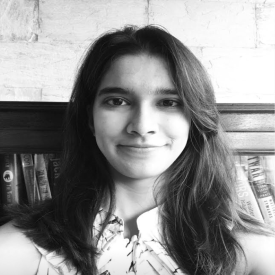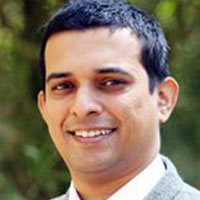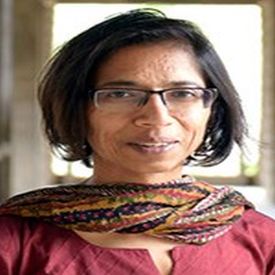The distributional consequences of political reservations
This article identifies and attempts to fill in the gaps in understanding the effects of reservations for Scheduled Castes (SCs) in Panchayats. Using data from a state-wide census, multiple administra...
-
 Chinmaya Kumar
Chinmaya Kumar  M.R. Sharan
M.R. Sharan  28 November, 2023
28 November, 2023
- Articles
Caste-based differences in self-help groups: Evidence from a rural livelihood programme
The National Rural Livelihood Mission aims to increase income and improve wellbeing for rural households. Using survey data from nine states in India, this article analyses the existence of caste-base...
-
 Chandan Jain
Chandan Jain  Krishna Kejriwal
Krishna Kejriwal  Ritwik Sarkar
Ritwik Sarkar  Pooja Sengupta
Pooja Sengupta  05 August, 2022
05 August, 2022
- Articles
India’s Women’s Reservation Act: A big win for governance and beyond
Amidst debates about the recently passed women's reservation act and whether it will reduce gender disparities on the ground, Wattal and Gopalan summarise evidence from a number of randomised evaluati...
-
 Akshara Gopalan
Akshara Gopalan  Urvashi Wattal
Urvashi Wattal  15 December, 2023
15 December, 2023
- Perspectives
Are women politicians good for economic growth?
There has been a phenomenal global increase in the proportion of women in politics in the last two decades, but there is no evidence of how this influences economic performance. This article investiga...
-
 Sonia Bhalotra
Sonia Bhalotra  05 December, 2018
05 December, 2018
- Articles
Whose education matters? An analysis of inter-caste marriages in India
The rate of inter-caste marriages in India was as low as 5.82% in 2011 and there has been no upward trend over the past four decades. This article examines the relationship between inter-caste marriag...
-
 Arka Roy Chaudhuri
Arka Roy Chaudhuri  Tridip Ray
Tridip Ray  Komal Sahai
Komal Sahai  30 November, 2018
30 November, 2018
- Articles
Perceived risk of street harassment and college choice of women in Delhi
In New Delhi, 95% of women aged 16-49 report feeling unsafe in public spaces. This article shows that in order to feel safer, women in the capital city choose lower quality colleges, travel for a long...
-
 Girija Borker
Girija Borker  02 November, 2018
02 November, 2018
- Articles
Women’s inheritance rights and son preference in India
An important driver of India’s unnaturally male-biased population sex ratio is the desire among Indian parents to have sons. This article investigates the extent to which this desire is driven by th...
-
 Sonia Bhalotra
Sonia Bhalotra  Rachel Brulé
Rachel Brulé  Sanchari Roy
Sanchari Roy  29 October, 2018
29 October, 2018
- Articles
Political reservations for women and policy influence of low-castes in India
Many policies are designed along a particular identity dimension, such as gender or ethnicity. However, such policies overlook the fact that individuals are associated with several identity dimensions...
-
 Guilhem Cassan
Guilhem Cassan  Lore Vandewalle
Lore Vandewalle  19 September, 2018
19 September, 2018
- Articles
Are Indian girls more educated than their mothers?
While intergenerational educational mobility of father-son pairs in India has been documented to some extent, there is negligible analysis on how daughters compare to their mothers in terms of educati...
-
 Ashish Singh
Ashish Singh  05 September, 2018
05 September, 2018
- Articles
Do property rights exacerbate son preference?
While land reform has been shown to have benefits like increased agricultural productivity and access to credit, not much attention has been devoted to investigating its impact on gender inequality wi...
-
 Sonia Bhalotra
Sonia Bhalotra  Abhishek Chakravarty
Abhishek Chakravarty  Dilip Mookherjee
Dilip Mookherjee  Francesco J. Pino
Francesco J. Pino  24 August, 2018
24 August, 2018
- Articles
When electoral quotas reduce caste-based discrimination
While affirmative action policies are widely used to tackle the underrepresentation of certain groups, their efficiency is fiercely debated. This article uses novel data from India to explore how quot...
-
 Victoire Girard
Victoire Girard  08 August, 2018
08 August, 2018
- Articles
How women’s age at marriage impacts domestic violence
Domestic violence affects one in three women in their lifetime worldwide, and has serious adverse health and economic consequences. Analysing data from the latest National Family Health Survey of Indi...
-
 Gaurav Dhamija
Gaurav Dhamija  Punarjit Roychowdhury
Punarjit Roychowdhury  02 July, 2018
02 July, 2018
- Articles
Social identity and perceived income adequacy
Perceptions about income adequacy, in addition to actual income adequacy, are a critical part of individual well-being. However, factors that determine these perceptions have not been well-investigate...
-
 Ashwini Deshpande
Ashwini Deshpande  Deepti Goel
Deepti Goel  13 June, 2018
13 June, 2018
- Articles
Unity in cricket: Integrated leagues and caste divisions
A growing body of evidence supports the idea that intergroup contact can reduce discrimination. However, different types of contact – collaborative or adversarial – may have different effects. Bas...
-
 Matt Lowe
Matt Lowe  23 May, 2018
23 May, 2018
- Articles
What happens when investments targeting women’s microbusinesses go to men?
Several studies find that male-operated – but not female-operated – microenterprises benefit from access to grants or loans. Applying the lens of household-level rather than individual-level inves...
-
 Arielle Bernhardt
Arielle Bernhardt  Erica Field
Erica Field  Rohini Pande
Rohini Pande  Natalia Rigol
Natalia Rigol  02 May, 2018
02 May, 2018
- Articles
Twitter feed
Tweets by Ideas4IndiaMost Popular Social Identity Posts
A division of labourers: Caste identity and efficiency in India
Castes in India are closely associated with certain occupations and determine the jobs done by millions. This study uses a new dataset to show that a large proportion of workers still work in their ca...
 Guilhem Cassan
Guilhem Cassan  Daniel Keniston
Daniel Keniston  Tatjana Kleineberg
Tatjana Kleineberg  18 November, 2022
18 November, 2022
- Articles
Sex ratios and religion in India and South Asia
In South Asia, low child sex ratios are increasingly an isolated Indian phenomenon. Within India, child sex ratios are ‘normal’ among Christians and Muslims but much lower among Hindus, Sikhs, and...
 Swati Narayan
Swati Narayan  03 April, 2019
03 April, 2019
- Articles
Hindu-Muslim fertility differentials in India: An update
Building on past research, Saswata Ghosh and Pallabi Das estimate the state- and district-level fertility differentials between Hindus and Muslims using data from the latest round of the NFHS. They sh...
 Pallabi Das
Pallabi Das  Saswata Ghosh
Saswata Ghosh  18 April, 2023
18 April, 2023
- Articles





 30 March, 2023
30 March, 2023






